|
The largest proportion of American voters identify themselves as independents. These are the voters who do not formally align themselves with a political party, and are also called non-affiliated voters. I fall into this category. According to a 2021 Gallup poll approximately 29% of voters identified as Democrats, 27% as Republicans, and 43% as independents. There are dozens of local, state, and national political parties other than the two majors. The biggest of the “third-parties” are the Libertarian Party, Green Party, and American Independent Party. Most of the third-parties are too narrow in scope to attract enough independent voters to make much of a difference. A newly formed political party called “Forward” is out to change all that. Let’s take a look at this new party and at other ways independent voters may have more influence in the political process. Forward (FWD): Last month three political organizations announced that they have merged to create a new entity called “Forward”. Forward plans to officially launch as a new political party on September 24, 2022. It will be co-chaired by former Democrat candidate for President Andrew Yang and former Republican Governor of New Jersey Christine Todd Whitman. According to a recent press release, Forward “will be a political home for the majority of Americans who want to move past the era of divisiveness and do-nothing politicians so that our government starts working again”. There tag line is “Not Left. Not Right. Forward”. Forward proposes to reject the divisiveness of the far right and far left and pursue common ground ideas the majority of Americans can support. This all signs well and good, and a third major political party built on compromise and centrist ideas would be a good thing for America. But third-parties don’t have a great track record in this country. The Democrat and Republican Parties are a duopoly and have become the de facto gate keepers to the political process in the United States. Third-Party Angst: Most voters choose a candidate from one of the two major political parties rather than “wasting” their vote on a third-party or independent candidate. The current system discourages third-party candidates for fear of the “spoiler effect”. This occurs when the third-party candidate pulls a significant number of votes from a major party candidate, impacting the outcome of the election. Ross Perot received enough of the Republican and independent votes to assure Bill Clinton’s victory over George H.W. Bush in the 1992 Presidential election. Al Gore would have probably beaten George W. Bush in 2000 if not for the votes that went to Green Party candidate Ralph Nader. Fear of the spoiler effect helps to entrench the two major parties and keeps minor parties and independent candidates from gaining much traction. The result is that voters often have the choice of picking between the lesser of two evils. To get around this problem, Forward is pushing “Ranked-Choice Voting” and “Open Primaries” as part of its platform. I have written about both of these in a previous blog, but the concepts are worth repeating here. Open Primaries: In an open or nonpartisan primary, everyone who wants to run for a given office can enter the same primary election regardless of their party affiliation. In a true open primary, all candidates would be listed on the same ballot and the election would be open to all voters, regardless of political affiliation. But this is not the case in most states because political parties often “close” their primaries to those not registered with their party. Therefore, many independent voters are either prohibited from voting in party primary elections or face restrictions. Open primaries give all constituents a voice in the election and it moderates the process by forcing politicians to appeal to independents as well as to their base. Closed primaries have the perverse effect of producing elected officials more accountable to their party than their constituents. You can find more information on this important topic at “Open Primaries”, an organization advocating for open primaries. After all, no American should be required to join a political party to exercise their right to vote. Ranked-Choice Voting (RCV): An election system in which a voter can rank candidates in order of preference. Here’s how it works:
Is it time for another major political party in this country? I think it is. Whether that major new party is Forward or something else, I think it would be good for democracy. I wish Forward well, and I hope that they succeed. Even if they don’t, I will continue to support RCV and open-primaries. These are nonpartisan approaches that give voters more choice and will help to make our elections more democratic.
If you enjoy reading this type of commentary please subscribe to my blog and tell a friend. You will receive an email notification when new blogs are posted. The email will come from the site’s email: [email protected]. Thanks, Armchair American
0 Comments
The ability to recall elected officials has been part of the California Constitution since 1911. Though seldom used, it is a provision which holds politicians accountable to the voters for misdeeds while in office. On September 14, 2021 Democratic Governor Gavin Newsom defeated a recall election put in motion by a group of Republicans upset principally for his handling of the coronavirus pandemic. This partisan attack on a popular governor cost the taxpayers over $276 million, leaving many Californians rethinking the whole process. How does the recall process work, what changes, if any, should be made, and how would those changes take place? The Recall Law: Recall gives voters the power to remove any elected state officer, and most elected local officers, before the expiration of their term. Any registered voter may initiate a recall as long as they are qualified to vote for the office of the officer they seek to recall. A recall can be initiated for any reason and the process is fairly simple. There are some minor differences between recalling a state vs local officer, so for the sake of simplicity I will stick to the process for recalling a governor. A complete description of the recall process in California can be found at the following link, https://elections.cdn.sos.ca.gov/recalls/recall-procedures-guide.pdf. The recall begins with the preparation of a “notice of intent to recall petition”. This petition is served to the officer being recalled and filed with the Secretary of State. The notice of intention document must be published in a widely circulated publication. Proof of the publication, along with two copies of the proposed recall petition are then filed with the Secretary of State for review. Once approved, the recall petition may be circulated for signature by registered voters. Petitions for the recall of the governor must be signed by at least 12% of the number of voters who voted in the last election for governor, and must include at least 1% of the voters who voted in the previous election from at least five different counties. This last provision prevents large counties from unilaterally initiating recall elections. The sponsors of the recall petition have 160 days to collect the required number of signatures and have them validated by the Registrar of Voters in each county where signatories reside. Once this process is complete the recall petition is certified by the Secretary of State. The Governor must then publish a notice for the holding of the recall election. The Recall Ballot: In the latest recall election the ballot consisted of two parts. The first asked the following yes or no question: “Shall Gavin Newsom be recalled (removed) from the office of Governor?” The second part listed all qualified replacement candidates. You could vote for one of these candidates or provide a write-in candidate. The officer being recalled, in this case Newsom, is unable to run as a replacement candidate. If a majority of the votes on the recall question are “Yes”, the Governor is removed from office. The replacement candidate receiving the highest number of votes is elected to serve out the remainder of the Governor’s term. How to Qualify as a Replacement Candidate: A replacement candidate must be a California registered voter and file the required paperwork at least 59 days before the scheduled recall election. The paperwork includes nomination papers with a minimum of 65 valid signatures. The paperwork is filed with the county elections official along with a filing fee. In the latest recall election, the filing fee was $4, 194.94. In lieu of the filing fee, a candidate could submit a minimum of 7,000 signatures. If the 7,000-signature threshold was not reached, the filing fee could be reduced on a prorated basis based on the actual number of valid signatures collected. Flaws in the Recall Law:
Solutions to the Recall Law:
Changing the California Constitution: An amendment to the state constitution may be placed on the ballot by either a two-thirds vote in the California State Legislature or signatures equal to 8% of the votes cast in the previous gubernatorial election. The amendment is passed if it receives over 50% of the votes in a state-wide election.
The time has come to modify the way that recall elections are initiated and carried out in California. It is far too costly, and the process is anything but democratic. There are moves afoot in the private sector and in the state capitol to push through reforms. Let’s adopt some common-sense reforms that are already in place in most states across the nation. If you enjoy reading this type of commentary please subscribe to my blog and tell a friend. You will receive an email notification when new blogs are posted. The email will come from the site’s email: armchairamerican1776 @gmail.com. Thanks, Armchair American Passing new voting rights legislation has been a top priority for the Democrats ever since Republican held state houses began legislating new restrictive laws in the aftermath of the 2020 presidential election. To no one’s surprise, the Democrat sponsored “For the People Act” failed to advance in the Senate after a test vote was blocked by Republicans on June 22, 2021. But the real concern is the legislative actions taking place in many states to restrict access to voting. Are we witnessing an erosion of voting rights in this country, and what does it mean for our democracy? For the People Act: The bill would have been the largest federally mandated expansion of voting rights since the Voting Rights Act of 1965. It was initially compiled in 2019 as a liberal wish list, or messaging bill, for voting rights reforms. But it was rushed through the House as H.R.1 and handed to the Senate as S.1 ( https://www.congress.gov/bill/117th-congress/senate-bill/1/text), to counter Republicans’ actions at the state level. With over 800 pages, it was overly broad in scope and represented overreach by the Democrats. The bill was doomed from the start, with little chance of getting the needed 60 votes in the Senate. Main Provisions of the For the People Act:
There were critics of the bill on both sides of the political aisle. In addition to federal overreach into states’ affairs, the timelines were unrealistic, and it required costly upgrades to equipment and processes. With little chance of passage, why did the Democrats push for the bill? It was a way for Democrats to publicize their opposition to moves by several Republican lead states to impose new voting restrictions, and to put Republicans on notice that they will be watching as state and congressional district maps are redrawn in the coming weeks. Republican Controlled State Houses Restrict Voting Access: Since the 2020 presidential election, 31 new laws have been passed in 18 states restricting voting access, and several more are pending (https://tracker.votingrightslab.org/). These new laws vary by state, but include the following:
Republican Motivations Behind New Restrictive Voting Laws: Republicans claim that these new voting measures are needed to make elections more secure. It seems odd that the exact measures taken to make the 2020 election among the most secure and safest in our history, are the ones being dismantled in Republican controlled states. Numerous recounts, audits, and court orders have found no significant fraud in the 2020 election. So why the rush to impose new voting restrictions in Republican controlled states? In a word, Trump! The majority of Republicans believe that the election was stolen from Donald Trump (https://www.cnn.com/2021/04/11/politics/voting-restrictions-analysis/index.html). Tightening election laws perpetrates the “Big Lie” about the election being stolen, and demonstrates loyalty to Donald Trump. Fear of alienating Donald Trump, and by extension his loyal base of supporters, is driving the narrative and motivating the actions of many Republican politicians. It's Not All Bad News at the State Level: There have been 71 new laws easing voting rules across 28 states as of June 13, according to the Voting Rights Lab tracker. These new laws were enacted to increase voter turnout or to make permanent the changes made to make voting easier during the pandemic. Some of the changes include offering more early voting and mail-in options, and making it easier to register to vote. Several states have, or are in the process of restoring rights to people with past felony convictions. This trend is not just happening in blue states. Indiana, Kentucky, Louisiana, and others recognize that making voting more difficult hurts all voters. Justice Department Takes Action: Congressional Democrats vow to continue to fight for voting rights. But as they turn their attention to the Infrastructure Bill, no one expects new voting rights legislation anytime soon. It will be left to the Justice Department to monitor and defend against voter suppression. On June 11th Attorney General Merrick Garland pledged to combat efforts to restrict ballot access, and to prosecute those who threaten or harm election workers (https://www.npr.org/2021/06/11/1005717622/ag-garland-vows-to-defend-voting-rights-as-the-cornerstone-of-american-democracy). The Justice Department will double the size of its voting rights and enforcement staff, and will scrutinize state laws that violate the Voting Rights Act (https://www.britannica.com/event/Voting-Rights-Act). The department will also watch over upcoming redistricting efforts, especially if any result in disadvantaging people of color. True to his word, the Attorney General last week announced that his department will sue the state of Georgia over new voting laws that it recently passed (https://www.usatoday.com/story/news/politics/2021/04/10/georgia-new-voting-law-explained/7133587002/). Attorney General Garland stated that the suit was being brought because Georgia’s laws were “enacted with the purpose of denying or abridging the right of black Georgians to vote”. For this democracy to work it is vital to get as many people engaged in the process as possible. This means getting more people to vote, not less. Lifting barriers that prevent people from voting is critical for this to happen. Restricting voting rights will only create mistrust of the electoral process, our elected officials, and our government. Increasing voting access strengthens democracy, restricting it weakens it. The false narrative put forth by Donald Trump and his supporters following the 2020 presidential election, culminated in the January 6th Capitol riot, giving us a glimpse of what a fragile democracy looks like. Erecting barriers to voting will erode confidence in the election process, and we can’t let that happen. Update July 13, 2021: On July 1, 2021 the Supreme Court ruled that the states may impose restrictions on voting, upholding restrictive voting laws recently passed in Arizona. The Court’s majority ruled that the Voting Rights Act of 1965 can be used to strike down voting restrictions only when they impose substantial and disproportionate burdens on minority voters (https://www.nytimes.com/2021/07/01/us/politics/supreme-court-arizona-voting-restrictions.html). In other words, it is constitutional for states to put voting restrictions in place as long as they are only an inconvenience, and do not prevent someone from voting. Writing for the majority, Justice Alito listed the following guideposts for lower courts to follow in evaluating voting restriction cases:
This last guidepost gives powerful ammunition to any state legislature intent on making access to voting more difficult. The Supreme Court’s ruling will make it difficult to oppose voting restrictions being put into place in many GOP governed states. It will be interesting to see if this ruling will hamper the Department of Justice’s pending lawsuit against the new Georgia voting law. If you enjoy reading this type of commentary please subscribe to my blog and tell a friend. You will receive an email notification when new blogs are posted. The email will come from the site’s email: armchairamerican1776 @gmail.com. Thanks, Armchair American We in the U.S. are still living through the drama of the 2020 presidential election. Just like in the 2016 election, many voters found themselves voting against one candidate rather than for a preferred candidate. John Adams worried that “a division of the republic into two great parties…is to be dreaded as the great political evil.” It appears that Adams’ worries have come to pass. But we have not gotten here overnight, and there is plenty of blame on all sides of the political spectrum. More importantly, is there anything that individual voters can do, or do we just have to accept the status quo? There are many organizations and grass roots movements working to patch the holes in the political system, and to strengthen the democratic process in our country. I have already written about some of them. I dedicated a blog post to the Electoral College (the-electoral-college-love-it-or-leave-it.html). The “National Popular Vote” is an organization attempting to neutralize the Electoral College (https: w.nationalpopularvote.com/). Here are a few other organizations, of varying political views, that are attempting to make a difference: The Lincoln Project: (https://lincolnproject.us/). This organization was established by a group of conservative republicans to defeat Donald Trump and Trumpism, even if it meant helping Democrats get elected to office. In their view the political party is less important than restoring leadership and governance that respects the rule of law, recognizes the dignity of all people, and defends the Constitution and American values at home and abroad. With Donald Trump setting himself up as a presidential candidate in 2024, or simply as a Republican power broker, the Lincoln Project will not soon go away. Run for Something: (https://runforsomething.net/). This organization helps to support young diverse progressives running for office. Their goal is to build a strong Democrat bench for elected and leadership positions. Indivisible: (https://indivisible.org/). This is a national grassroots movement of millions of activists in every state, with partnerships between thousands of autonomous local Indivisible groups and a national staff. Their main goal is to defeat the right-wing takeover of American government and build an inclusive democracy. Sunrise Movement: (https://www.sunrisemovement.org/). This is a youth movement to stop climate change and create millions of good jobs in the process. The Sunrise Movement is attempting to make climate change an urgent priority across America, end the corrupting influence of fossil fuel executives on our politics, and elect leaders who stand up for the health and well-being of all people. Swing Left: (https://swingleft.org/). This organization helps individuals find the most impactful things that they can do to help Democrats win key elections. Americans for Prosperity: (https://americansforprosperity.org/). This is a right leaning group that engages in broad-based grassroots outreach to advocate for long-term solutions to the country’s biggest problems. They focus on issues that prevent people from reaching their full potential, such as immigration, tax reform, burdensome regulations, healthcare and criminal justice. Freedom Works: (https://www.freedomworks.org/). A right leaning organization established to build, educate, and mobilize the largest network of activists to advocate for the principles of smaller government, lower taxes, free markets, personal liberty and the rule of law. Unite America: (https://www.uniteamerica.org/). This grass roots organization is dedicated to putting country over party, which is what attracted me to it. It is a movement of Democrats, Republicans, and Independents working to put voters first by fostering a more representative and functional government. They do this by investing in nonpartisan electoral reform campaigns and work to elect centrist candidates. Two major issues that Unite America is working on are “open primaries” and “rank-choice voting”. If these two voting models were adopted nation-wide, it would go a long way towards loosening the stranglehold that the Republicans and Democrats have on our electoral system. Let’s look at these two policies more closely. Open Primaries: In eighteen states, independent voters are either prohibited from voting in party primary elections or face restrictions. This is because the primary system is closed to only those registered to one of the two major political parties. This seems undemocratic, and unfair due to the fact that all taxpayers pay to hold elections. Open primary systems allow independent voters to vote in either party’s primary. Independent voters, and voters not affiliated with a political party, are the fastest growing segment of the electorate. Open primaries give all constituents a voice in the election and it moderates the process by forcing politicians to appeal to independents as well as to their base. Closed primaries have the perverse effect of producing elected officials more accountable to their party than their constituents. Party primaries are a main reason why elected representatives refuse to work across the aisle. Working across the aisle is often viewed as being disloyal to the party and may result in getting beaten by a more ideological extreme candidate in the next election. “Open Primaries” (https://www.openprimaries.org/) is an organize advocating for open primaries. It was founded on the principle that no American should be required to join a political party to exercise their right to vote. Rank-Choice Voting (RCV): An election system in which a voter can rank candidates in order of preference. It is really quite simple. Here’s how it works:
Advantages of RCV over Traditional Voting:
Rank-Choice Voting is not just wishful thinking. Five states use RCV for overseas and military voters, and twenty municipalities use or have recently approved the use of RCV. In 2016 Maine passed a law that mandates that all state and federal primary elections, and federal general elections be conducted by RCV. In 2020 Maine became the first state in the U.S. to use rank-choice voting in a presidential election. Follow this link to learn to more on RCV in Maine: (https://www.newscentermaine.com/article/news/politics/elections/what-is-and-how-does-maine-ranked-choice-voting-work/97-e7964e06-a087-4b79-97cc-7f053c294248). Earlier this month voters in Alaska approved a ballot measure to mandate the use of rank-choice voting in general elections and the use of “top-four” nonpartisan primaries (https://www.adn.com/politics/2020/11/17/alaska-becomes-second-state-to-approve-ranked-choice-voting-as-ballot-measure-2-passes-by-1/). In Alaska’s new “Final Four Voting” system, all candidates, regardless of party affiliation, would run in a single primary open to all voters. The top four vote getters advance to the general election. In the general election, voters rank the four candidates in order of preference. This is certainly a threat to the status quo (Democrat and Republican parties), but it puts voters first by giving them more of a voice in their elections. Keep an eye on future elections in Maine and Alaska, this could (and in my opinion should) be our future all across America. The reason that these reforms have taken hold in Maine and Alaska, is that the voters in these states are very independent and don’t march in lock-step with the two major political parties. Our country is more politically polarized than ever, and this is not going to change any time soon if just two political parties are calling the shots. Let’s heed the warnings against hyper-partisanship that George Washington articulated in his farewell address, and the great political evil of a republic divided by two great parties that John Adams warned about. “Open primaries” and “rank-choice voting” are nonpartisan approaches that give voters more choice, promotes candidates with broader appeal, and encourages politicians to look beyond their party’s interests. We don’t have to accept politics as usual. If you enjoy reading this type of commentary please subscribe to my blog and tell a friend. You will receive an email notification when new blogs are posted. The email will come from the site’s email: [email protected].
Thanks, Armchair American Large numbers of voters are not waiting until November 3, 2020 to cast their ballots. As of this date over 23 million Americans have voted, and so have I. Like me, most Americans had decided a long time ago who they’d vote for, at least for President. Maybe the pandemic restrictions have focused our minds more acutely on the election this year. Or maybe people are so sick of politics that they just want to vote, and move on with their lives. I fall into both camps. COVID-19 has forced states to change the way that elections are held, and have provided voters with more options. Let’s take a look at some of these new options and I will share my voting experience. What’s the Rush to Vote?
Early Voting: In order to facilitate voting during the pandemic, many states have taken steps to make it easier to register to vote, and have expanded ways to cast a ballot. Early voting of some sort is now available in 43 states and the District of Columbia. Options for early voting include mail-in voting/absentee voting, early in-person voting, and off hours voting, including weekends. For the specifics on each state follow this link: (https://www.ncsl.org/research/elections-and-campaigns/early-voting-in-state-elections.aspx). Many states now allow voters to vote absentee without having to provide a reason. States like New York that require a valid reason to vote absentee, now consider fear of COVID-19 a valid reason for requesting an absentee ballot. Some states have sent absentee request forms to all registered voters. California, Nevada, and the District of Columbia have taken it a step further by sending mail-in ballots to all registered voters (https://www.usnews.com/news/elections/articles/2020-10-16/a-2020-success-story-early-voting-soars-even-as-the-coronavirus-pandemic-rages-on). Voters now have several options once they complete their mail-in ballot. They can use the United States Postal Service, official drop boxes set up by the counties and states, in-person drop off sites, and at polling places once in-person voting begins. Most states will accept mail-in ballots even after election day, as long as they are post marked on or before November 3, 2020. This varies from state to state so check with your local election officials if you are unsure. Here is a link for the specific rules for each state (https://www.usa.gov/election-office). Reports indicate that Democrats have outvoted Republicans 2 to 1 so far in this 2020 Presidential election (https://www.bbc.com/news/election-us-2020-54572790). Of these early voting Democrats, women and blacks are voting in high numbers. Republicans may be following President Trump’s lead by not trusting mail-in voting. Democrats may win the early vote, but they shouldn’t become over confident. Republicans will probably show up in large numbers at the polls on November 3, 2020. Pre-processing Early Ballots: How states handle ballots received prior to election day varies widely. It ranges from verifying signatures, opening envelopes, and readying ballots for tabulation. Twenty-two states process mail-in and absentee ballots upon receipt. Another twenty-five states process them starting several weeks, to just hours before election day. Pennsylvania, Wisconsin, Alabama, and Mississippi are not allowed to process or count mail-in ballots before election day. The following link provides the specifics for each state: (https://www.ncsl.org/research/elections-and-campaigns/vopp-table-16-when-absentee-mail-ballot-processing-and-counting-can-begin.aspx). If the election is close, the delay in processing mail-in and absentee ballots may result in a winner not being known for hours to days after the close of polls on November 3, 2020. Americans need to be patient and be prepared for a delayed election result. My Voting Experience: I have known for many months how I would cast my vote in the Presidential election, but there were many down ballot candidates, propositions, and measures that needed further consideration. After spending the last several weeks watching news programs, listening to candidate forums (over Zoom of course), reading newspapers, and wading through dozens of election mailers, I sat down and filled out my mail-in ballot this week. In May, California Governor Gavin Newsom issued an executive order making all registered voters in the state automatically eligible to vote in the November 3, 2020 General Election by mail. Therefore, every voter in California was mailed a mail-in ballot. The process really got started last month. Here is the time line:
 If you use a drop box to deliver your ballot, make sure that it is officially sanctioned. In California, official drop boxes must include the county seal and be securely bolted to the ground. The use of unauthorized drop boxes to collect ballots is illegal in California. This has not stopped the GOP from placing unofficial drop boxes in several locations in Southern California. The motives for this are not exactly clear. Threatened with legal action, the GOP has stopped claiming that these drop boxes are official, and is restricting where they can be placed (https://www.npr.org/2020/10/16/923969669/california-eases-off-legal-threats-over-gop-unauthorized-ballot-drop-boxes). Counties publish the sites where sanctioned drop boxes are located. So check with county election officials if you are unsure. When voting by mail it is important to get your ballot in as soon as possible. This leaves time to correct mistakes that sometimes occur, such as a signature that can’t be verified for whatever reason. The more people who vote early, the shorter the lines will be on election day, minimizing the spread of COVID-19. Getting your ballot in early will also ensure that your vote is included in the initial election results which will be reported shortly after the polls close on election day. The sooner the election results are known, the less opportunity there will be to spin a false narrative around the legitimacy of the election. If you enjoy reading this type of commentary please subscribe to my blog and tell a friend. You will receive an email notification when new blogs are posted. The email will come from the site’s email: [email protected].
Thanks, Armchair American Every four years we are reminded that the President and Vice-President of the United States are not democratically elected. They are elected by a group of 538 electors of the Electoral College. This November 3rd (or sooner if you vote by mail) when you cast your vote for President and Vice-President, you will actually be telling your State which candidate you want the State’s electors to vote for. What is the Electoral College? Does it still work as originally conceived, and what are the alternatives? Electoral College: It is a body of 538 electors which is selected every four years from each State and Washington D.C., for the express purpose of electing the President and Vice-President of the United States. Every State gets one elector for each member of congress. California for example, has 2 Senators and 53 Representatives in the House of Representatives, and therefore has a total of 55 electors. Washington D.C. has a total of 3 electors. As spelled out in the Constitution, each State chooses its own electors. The selection process differs by political party and by State. The National Association of Secretaries of State has compiled a list of the laws governing the selection of Presidential Electors for each State. (https://www.nass.org/sites/default/files/surveys/2020-10/summary-electoral-college-laws-100220.pdf). In all States, except Maine and Nebraska, the Presidential candidate with the most popular votes in that State, receives all of the State’s electors. In Maine and Nebraska, the electors are awarded to the popular vote winner of each congressional district, plus two electors are awarded to the winner of the State’s popular vote. In order to be elected President, the candidate must receive the majority of the electors, 270 or more. Important Dates:
Why We Have the Electoral College: Article 2, section 1 of the U.S. Constitution established that electors selected from each State, and not a direct vote of the people, would elect the President and Vice-President. The Constitution established the number of electors each State was entitled to, but left it up to the individual States how to select their electors. Originally the candidate with the second highest number of electoral votes would become the Vice-President. This was changed in 1804 with the 12th Amendment, which directed electors to cast separate votes for the President and Vice-President. The drafters of the Constitution didn’t want a direct vote for President for several reasons. They needed to appease the less populated States, particularly those in the South who feared that a direct vote would disadvantage them. The drafters were also fearful that a direct election by all voters could be corrupted by foreign and other unscrupulous interests. It was also feared that the citizenry would not be well informed in order to make such an important selection to the highest office in the land. According to Alexander Hamilton, “A small number of persons, selected by their fellow citizens from the general mass, will be most likely to possess the information and discernment requisite to such complicated investigations.” (https://guides.loc.gov/federalist-papers/text-61-70). Reasons to Change the Electoral College: According to a recent Pew Research poll, a majority of U.S. adults favor replacing the Electoral College with a simple popular vote system for electing the President. (https://www.pewresearch.org/fact-tank/2020/03/13/a-majority-of-americans-continue-to-favor-replacing-electoral-college-with-a-nationwide-popular-vote/). Below is a list of the main reasons to replace the current system:
Reasons to Keep the Electoral College:
The National Popular Vote: Fixing the current system through a Constitutional amendment is a non-starter in the present political climate. Is there a non-Constitutional change that could achieve the same outcome as eliminating the Electoral College? The answer is yes, and a movement is already underway to do just that. The “National Popular Vote” is an organization established, not to eliminate the Electoral College, but to effectively neutralize it. The premise is rather simple. If enough States agree to pledge all of their electoral votes to the candidate who wins the national popular vote, that candidate will win the Presidency, effectively side-stepping the Electoral College. When enacted by enough States with a combined electoral vote count of 270 or higher, the National Popular Vote interstate compact will be established and go into effect. Since 2006, the National Popular Vote bill has been enacted by fifteen States and Washington D.C., representing 196 electoral votes. (https://www.nationalpopularvote.com/). This system would be more democratic in ensuring that every voter, in every State, has a direct vote in electing the President and Vice-President of the United States. With the 2020 Presidential election just three weeks away, I can’t think of a better time to review just how we elect our President, and to consider all the ramifications surrounding the process. The Electoral College has some pluses and minuses, but does it serve the best interests of the American people? I certainly don’t think that it functions as originally intended. The concentration of power in a few Northern States is no longer a problem. The selection of qualified Presidential Electors to weed out unsuitable candidates is an antiquated notion. In the age of the internet and mass media, we no longer have to rely upon direct contact with a candidate to hear their message. A national popular vote system would be more democratic and give voice to a more diverse group of candidates. The Democrat and Republican parties have not served this nation well over the past several decades. I seriously think that it’s time for some fresh ideas and fresh faces to confront the challenges ahead.
If you enjoy reading this type of commentary please subscribe to my blog and tell a friend. You will receive an email notification when new blogs are posted. The email will come from the site’s email: [email protected]. Thanks, Armchair American Here it is the third week of July, and it is ramping up to be the summer of our collective discontent. We are in the midst of a worldwide pandemic, the economy is in a shambles, protests against police injustice occur nightly, civil war monuments are being toppled, and dozens of our citizens were killed by firearms over the 4th of July weekend. The citizenry of this country should be discontented, if not downright outraged. Contentment leads to complacency, and this is not a time to be complacent. Black Lives Matter was considered by some to be a fringe radical group when it started in 2013. Today it is an international movement with support from people of all races. It is an example of a group of people getting together in common cause, and raising awareness of racial injustice right here in the United States. I think that their cause is catching fire, and will finally lead to some positive changes. But what about the rest of us? How can we make a difference? The answer my friends is at the ballet box! The presidential general election will be held on November 3, 2020, and several state primaries are being held in the months leading up to November. You can find a state by state election calendar compiled by the Washington Post at (https://www.washingtonpost.com/elections/calendar-2020/) . Voting is a fundamental right of every U.S. citizen 18 years of age and older. The free exercise of this right is one of the most effective ways to let your voice be heard and to affect change. There are laws that make voting mandatory in approximately 22 countries, but not here in the United States. No one can force you to vote. But if citizens are complacent and don’t vote, how will change be made? If you are not motivated to vote, I have listed a few things that you may want to consider. Reasons to Vote:
Voting During the Pandemic: The COVID-19 pandemic has disrupted just about every aspect of our lives. To top it off we are faced with a national election. How do we do it safely during a time of self -quarantines, social distancing, and enhanced sanitation procedures? We don’t know if the virus will still be with us in November. But we can’t sit idle and wait to find out. We do have some experience with voting during this pandemic, and it wasn’t pretty! During this primary season we have all read and seen news reports of people waiting in long lines, under extreme conditions, to vote. Voters in Wisconsin stood in lines for hours in the frigid cold, to exercise their right to vote this past April. More recently the good people of Georgia endured long waits, in scorching heat, to vote in their primary. Why did this happen? Election officials blame it mostly on the pandemic. Many of the poll workers are volunteers, who were frankly too frightened to work the polls. Those who did work were provided too little, or inadequate training, due to distancing and sanitation rules. Fewer poll workers lead to consolidation of polling places, compounding an already bad situation. Is this what we can expect in the November election? I hope not, and it doesn’t have to be. According to an April survey by the PEW Research Center, 70% of voters surveyed were in favor of voting by mail (https://www.pewresearch.org/fact-tank/2020/06/24/as-states-move-to-expand-the-practice-relatively-few-americans-have-voted-by-mail/). In federal elections, you are not allowed to vote online. For most Americans, the only way you can vote without going in-person to a polling place, is to use an absentee ballet. This is not the same as vote-by-mail, which is allowed in 5 states. Let’s look at these two forms of voting by mail separately. Absentee Voting: Every state offers mail-in absentee voting. But every state’s election rules are different, and some may have changed due to the ongoing pandemic. Here is a link for the specific rules for each state (https://www.usa.gov/election-office). In May, California Governor Gavin Newsom issued an executive order making all registered voters in the state automatically eligible to vote in the November 3, 2020 general election by mail. Accordingly, all registered voters in California will receive a vote-by-mail ballot in the mail prior to the election. If you live in California, make sure that Registrar of Voters has your current address. I live in California and am registered as a permanent vote-by-mail voter. I have not stepped foot into a polling place in over 20 years, and have never failed to vote in an election. Both President Trump and Vice-President Pence vote in their respective states via absentee ballot, why don’t you? Vote-by-Mail: Currently 5 states conduct all-mail elections. They are Colorado, Hawaii, Oregon, Washington and Utah. Many states will choose to increase vote-by-mail by simply registering more voters to vote absentee. So why don’t we just have everyone vote by mail during the pandemic? Not so fast! The President and the Republicans are against expanding voting by mail. They claim that vote-by-mail increases voter fraud, and helps the Democrats. On April 8th Donald Trump tweeted out “Republicans should fight very hard when it comes to state wide mail-in voting. Democrats are clamoring for it. Tremendous potential for voter fraud, and for whatever reason, doesn’t work well for Republicans.” In a recent interview with Fox News' Chris Wallace, President Trump stated "I think mail-in voting is going to rig the election, I really do." However, a Stanford Institute for Economic Policy Research survey published in April, (https://siepr.stanford.edu/research/publications/neutral-partisan-effects-vote-mail-evidence-county-level-roll-outs) found no partisan effect in mail-only elections. The study found that neither the turnout nor the vote share, benefited either political party. The study did find that the overall number of ballots cast had increased. Isn’t that a good thing in a democracy? Voting by mail is not perfect, and may result in increased costs and delayed election results. But during a pandemic, if we can minimize the number of people who have to vote in person and reduce their risk of infection, then we should do it. We can have a safe and legitimate election if we have the will, and don’t wait too long. Register to Vote: If you are already registered to vote, great! If not, get a move on. Talk with your family and friends, and make sure that they are registered to vote. If you have moved since the last election, you may need to update your voter registration information. To register to vote or to change your voter registration, check with your Registrar of Voters. To find your state or local election office website, follow this link (https://www.usa.gov/election-office). Get registered and vote, it’s not difficult. Most of us now have the choice to vote in-person or via mail, so safety should not be a deterrent. Be a part of history, and let your voice be part of the conversation within your community and within this country. Elections matter! If you enjoy reading this type of commentary, please subscribe to my blog and tell a friend. You will receive an email notification when new blogs are posted. The email will come from the site’s email: [email protected].
Thanks, Armchair American |
AuthorThe Armchair American. Archives
November 2024
Categories
All
|

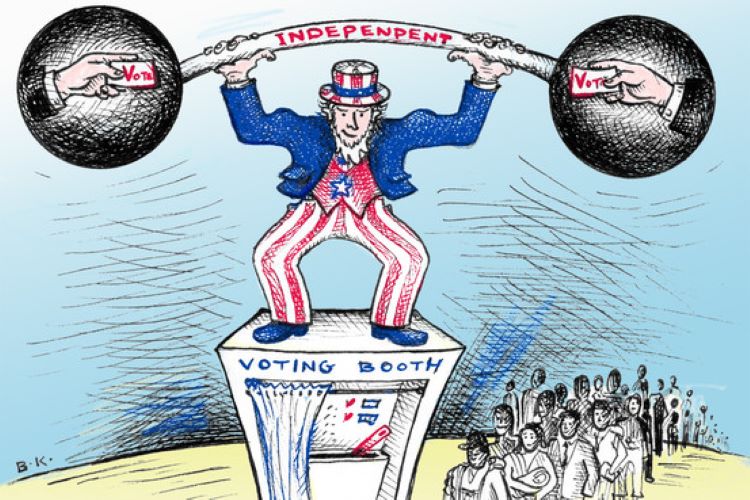



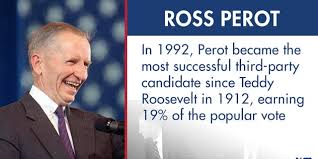


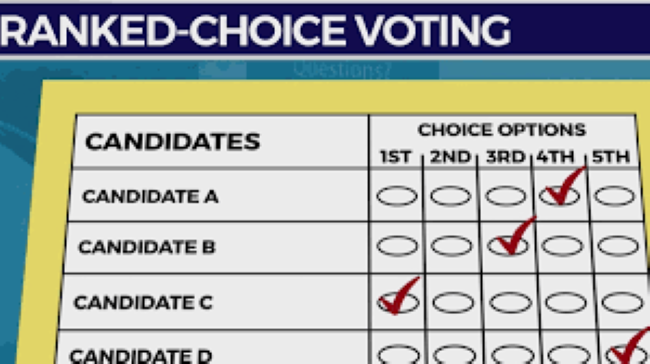

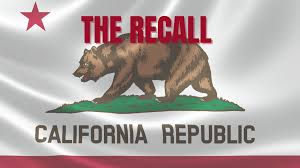



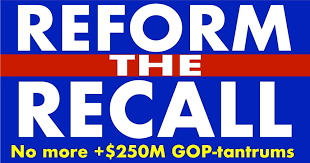




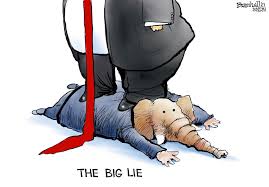

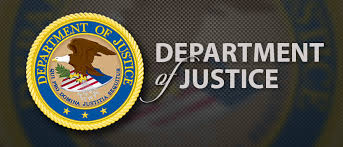


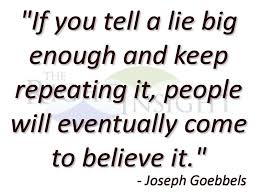
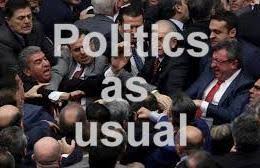

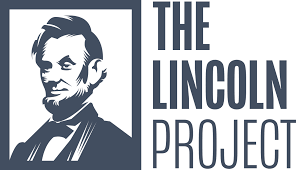
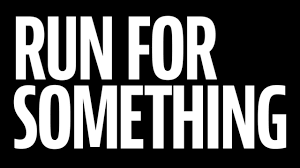





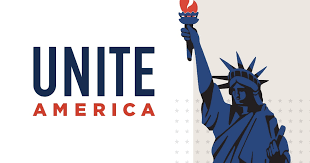

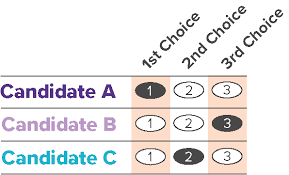





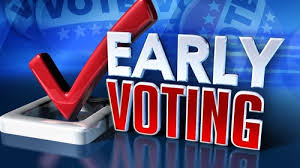

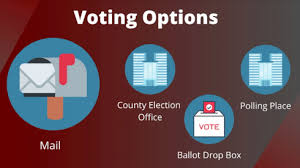




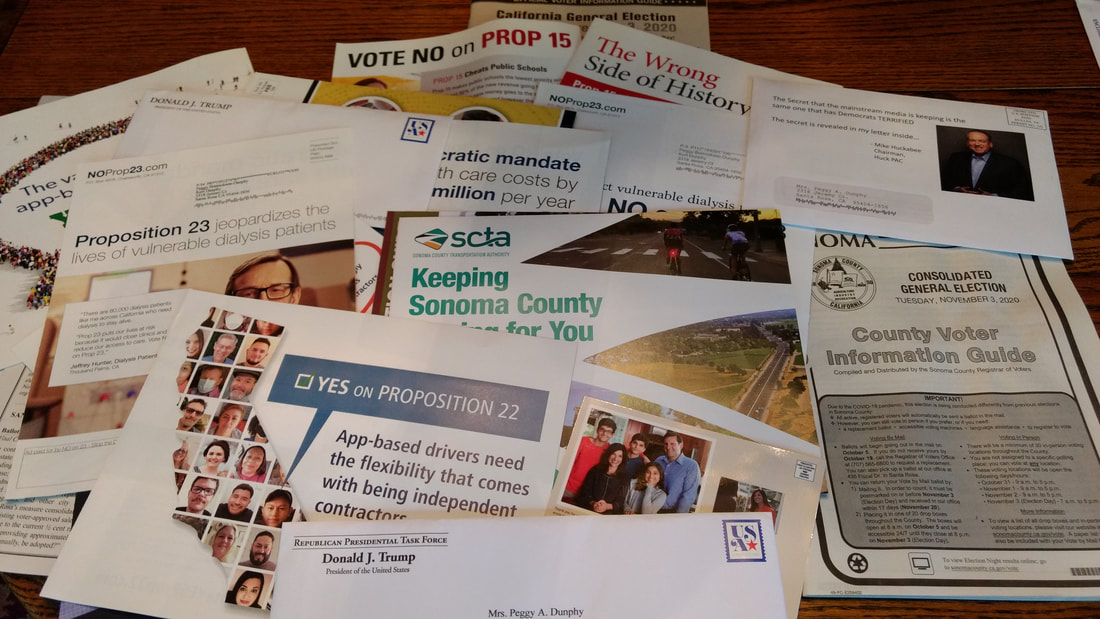

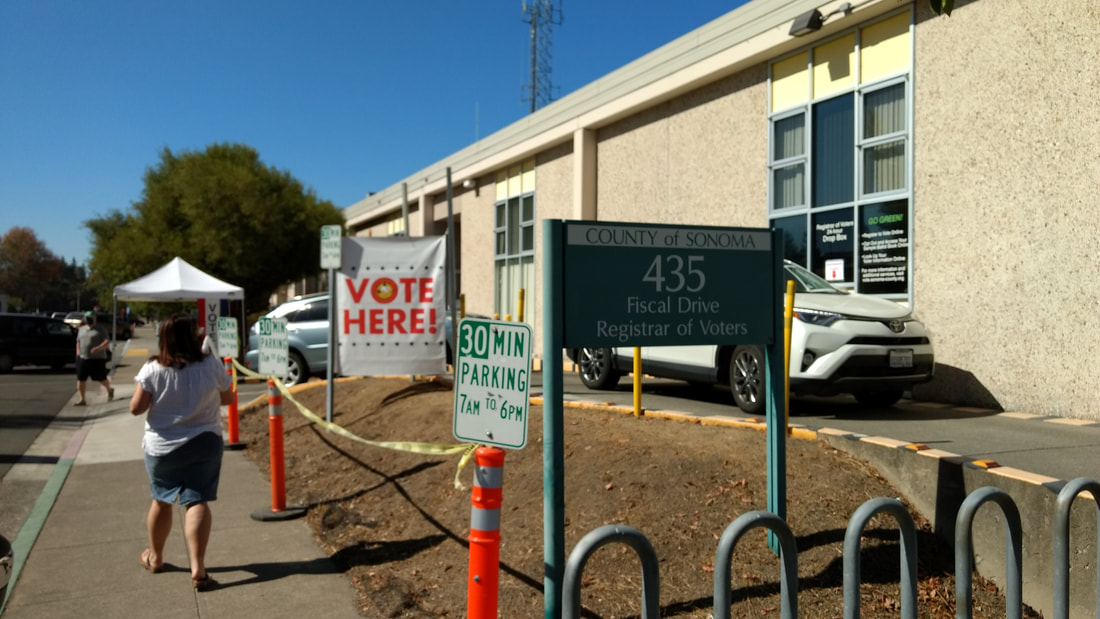

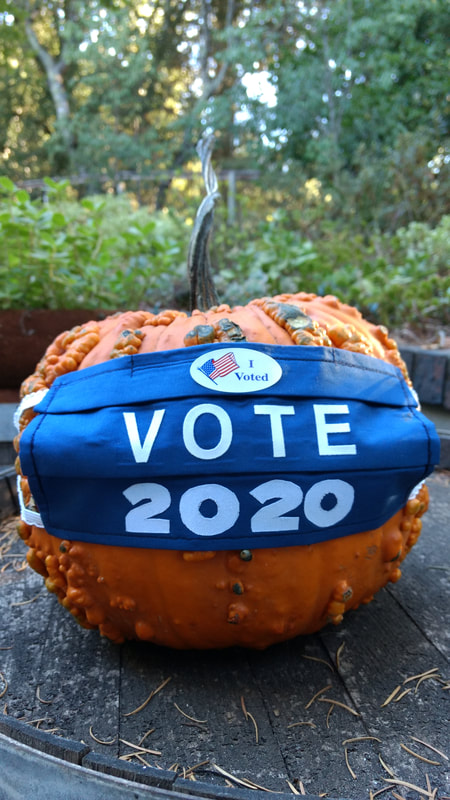
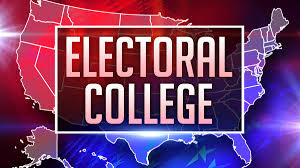


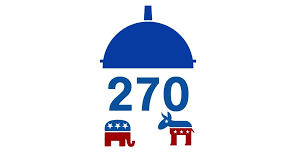



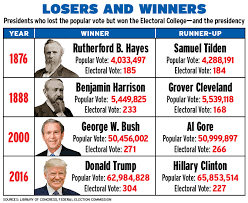


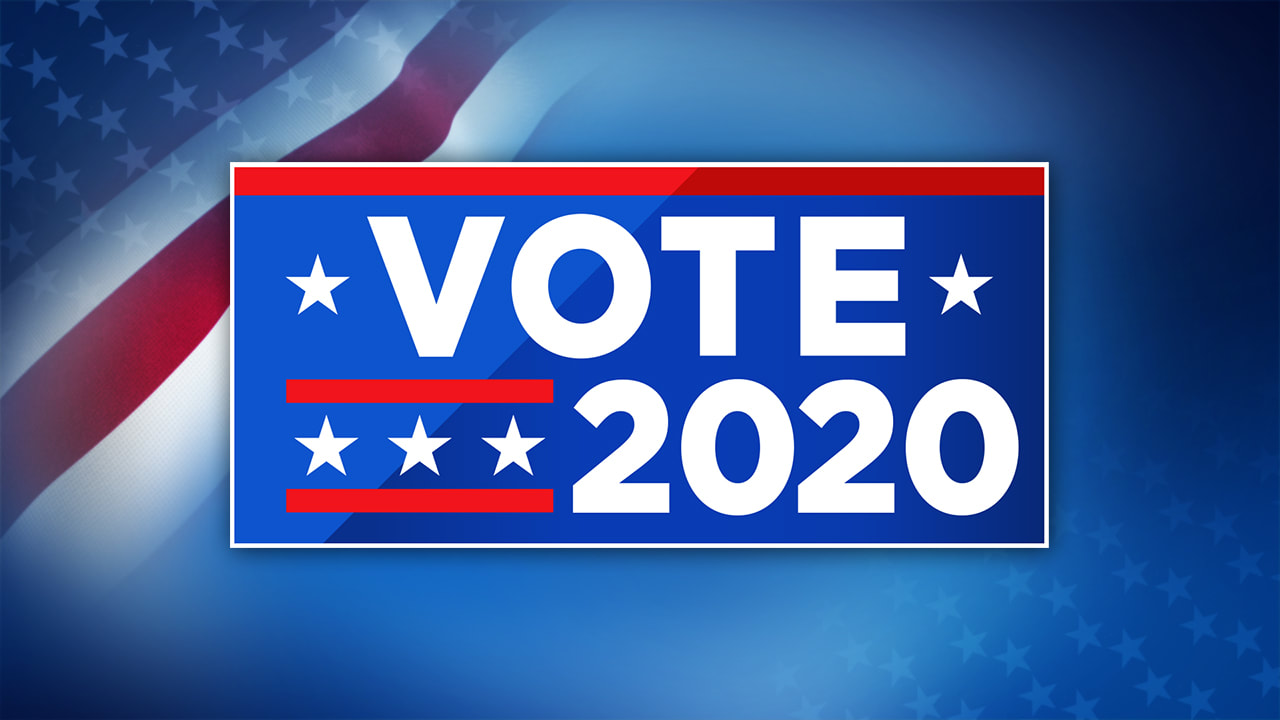
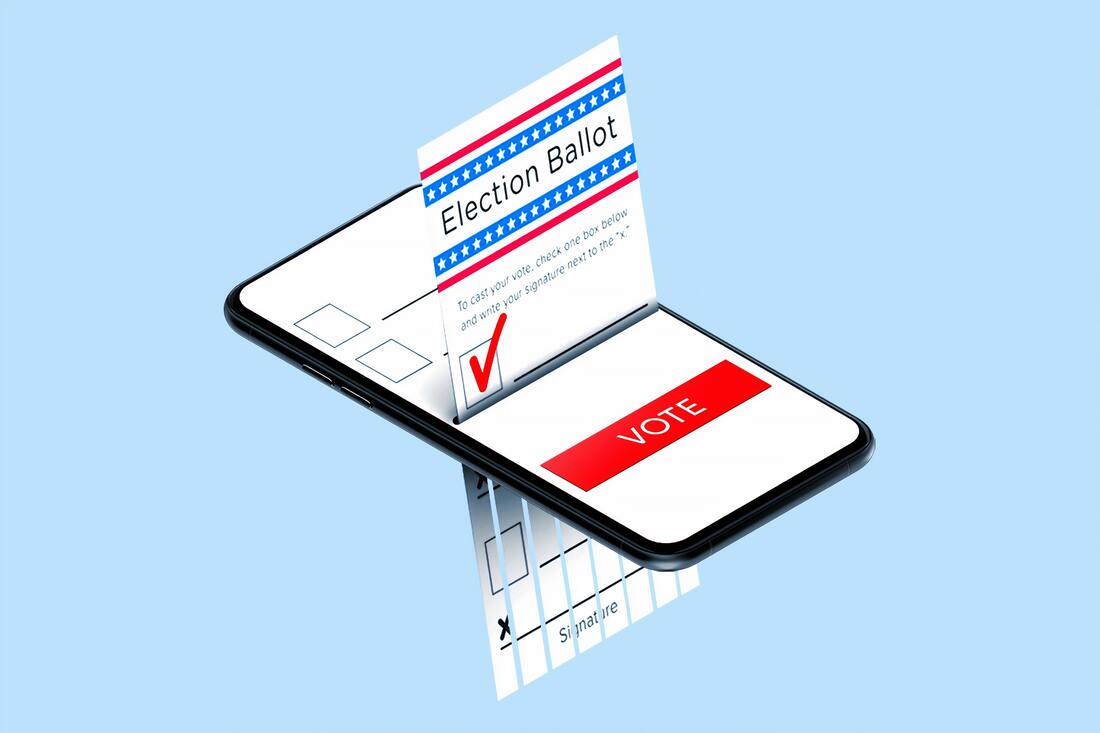


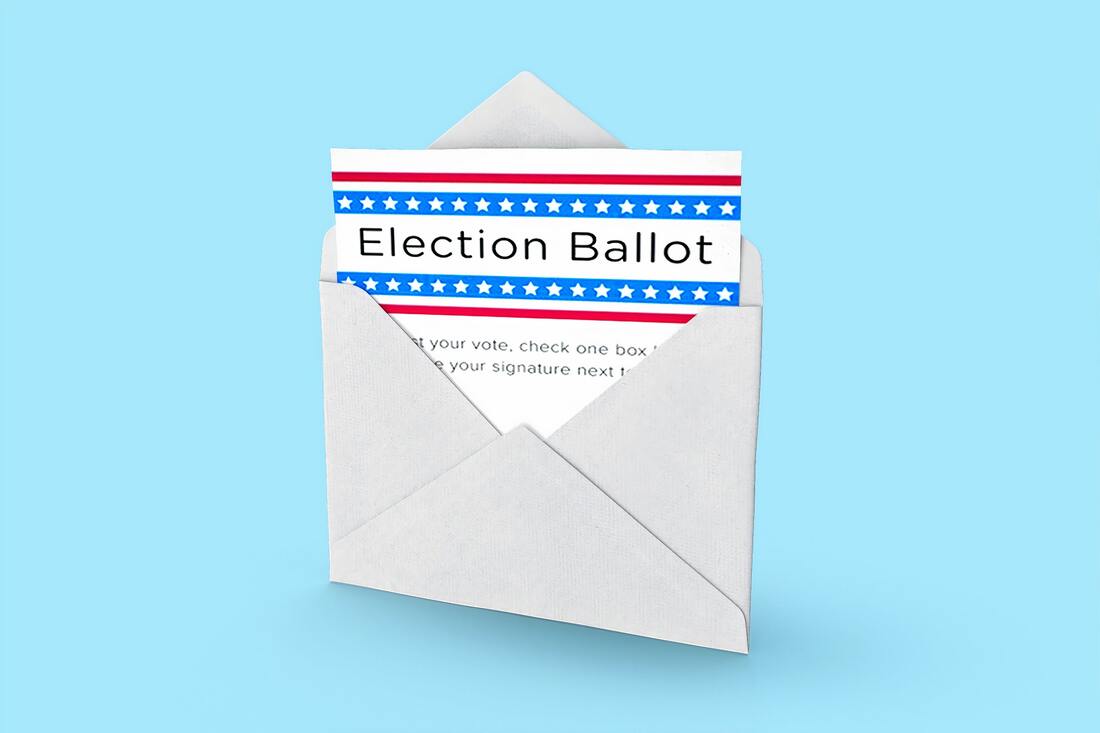

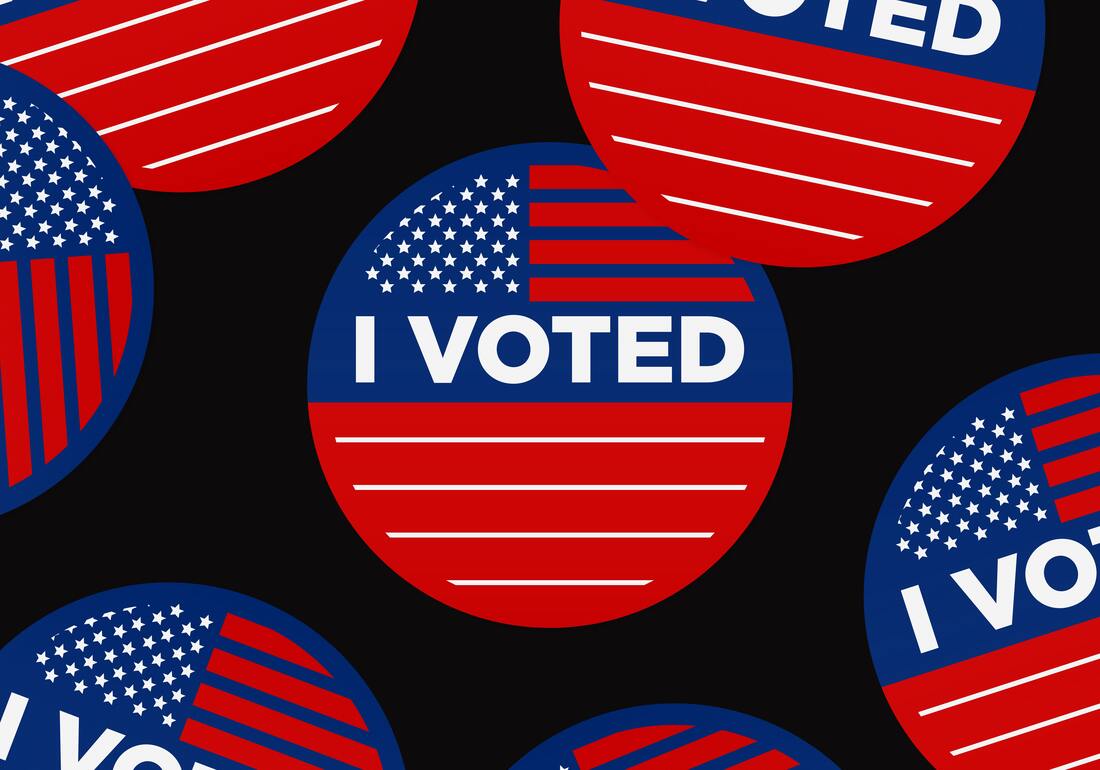


 RSS Feed
RSS Feed